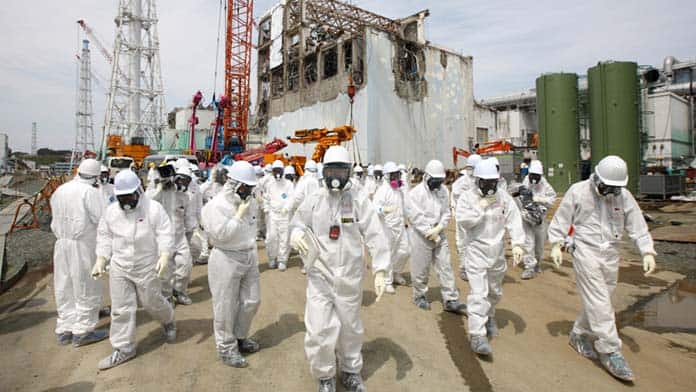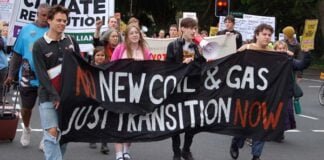The Coalition’s Peter Dutton has launched a push for nuclear power—but not because he expects it to come on-line any time soon. The move is a product of hostility to any serious increase in renewable energy such as solar and wind.
The AUKUS nuclear subs deal has also opened the door to Dutton. Labor’s support for AUKUS means it is downplaying the issues around nuclear waste and nuclear safety, since it already plans to acquire 11 nuclear reactors on board the subs.
Even on Dutton’s own claims a nuclear Small Modular Reactor (SMR) is more than ten years away. According to Dutton it would cost $5 billion for a small 470MW plant.
Because of its own appalling commitment to nuclear-fuelled warfare, Labor is wrongly focused solely on the logistical problems with nuclear energy. But it is right that nuclear doesn’t stack up on either cost or time.
Minister for Climate Change and Energy Chris Bowen claims it would cost around $387 billion to replace every Australian coal plant with SMRs—a technology that doesn’t exist commercially. One SMR has been built in Russia and one in China, both with capacities of less than 300MW.
A demonstration plant backed by Bill Gates in Wyoming with a proposed capacity of 345MW, a quarter of that of most coal-fired power plants, will cost $6 billion and won’t be ready until 2030—if it isn’t plagued by the delays and cost blow outs that have affected other Western nuclear efforts.
The most successful time frame in recent years to build a nuclear power plant was 16 years in the United Arab Emirates, which has no meaningful environmental laws or labour protections.
AGL’s Coopers Gap Wind Farm has a similar capacity at 453MW, cost six times less at $850 million, and took just two years to build.
Wind and solar are orders of magnitude cheaper and faster to construct, without the nuclear waste or safety issues.
Nuclear power plants have a history of accidents—and any disaster can carry catastrophic consequences.
There is no safe limit for exposure to radioactive material, which can cause cancers, auto-immune issues, fertility problems and death.
The Chernobyl disaster in 1986 caused between 35,000 and 150,000 deaths, while the Fukushima meltdown a decade ago saw Japan “on the verge” of having to evacuate Tokyo’s 50 million people.
Labor’s renewable transition
So why is Dutton proposing nuclear power? It is mainly a climate delaying tactic, to keep aging coal-fired power stations open beyond their expected life, and oppose Labor’s support for renewables.
Promoting nuclear power also allows the Nationals to continue to campaign locally against the wind turbines and new transmission lines needed for the large scale renewable roll-out, whilst still claiming they support net zero emissions by 2050.
A large part of Dutton’s job will simply be poking holes in Labor’s story, which is littered with failures.
Labor says it wants renewable energy to provide 82 per cent of Australia’s power by 2030. This was based on a projection about what would happen if the government simply left it to private companies to invest in energy generation, with most of the country’s coal power plants due to be replaced.
But a collapse in investment saw only $1.5 billion in new projects confirmed in 2023, down from $6.5 billion the previous year. This needs to rise dramatically to meet their targets. Labor is hoping its new “capacity investment scheme” will speed things up.
But already NSW Labor is looking to spend up to $400 million of public money a year to keep the Eraring coal-fired power station running.
And far from Labor meeting its reduction targets, carbon emissions increased last year by 3.6 million tonnes.
Dutton’s campaign for nuclear power is also a pitch to workers in fossil fuel industries over jobs, even if these will never materialise.
Labor still lacks a plan for workers in the existing fossil fuel industry.
Albanese’s latest tack was the promise of $1 billion for solar panel manufacturing, some of it on the site of the decommissioned Liddell coal power station in NSW.
Albanese made hints that the plan could provide regional jobs wherever coal power is shutting down—but there were no guarantees and few details.
Dutton’s nuclear push needs to be opposed, but Labor offers no alternative when it is paying lip service to climate action, at the same time as overseeing a massive expansion of fossil fuels.
Since the federal election it has approved five coal mines that will create almost 150 million tonnes of carbon emissions.
We need public investment in renewable energy with job guarantees for existing fossil fuel workers if we are going to transition at the speed the climate crisis requires.
By Chris Breen






